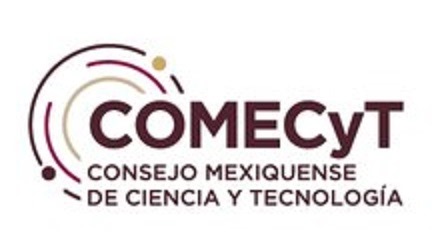PK – CM – 19 – BU Green Hydrogen, infinite clean energy
PK – CM – 19 – BU Green Hydrogen, infinite clean energy
Categoría: Pandilla Kids (3ro., 4to., 5to. y 6to. Año de primaria)
Área de participación: Medio Ambiente
Resumen
Los combustibles fósiles contaminan y dañan el medio ambiente. Una alternativa es el hidrógeno verde, un gas limpio que se obtiene separando las moléculas de agua mediante un proceso llamado electrólisis. Este experimento muestra cómo podemos obtener hidrógeno a partir del agua utilizando una batería y materiales sencillos. El hidrógeno puede ser usado como energía limpia en lugar de petróleo o gas, ayudando a reducir la contaminación.
Pregunta de Investigación
¿Qué alternativas tenemos para reemplazar el petróleo y otros gases contaminantes?Planteamiento del Problema
¿Sabías que quemar combustibles fósiles como el gas y el petróleo puede ser muy dañino para nuestro planeta y nuestra salud? Cuando usamos estos combustibles, liberan gases dañinos en el aire, como el dióxido de carbono, que puede ensuciar el aire y causar problemas como cáncer de pulmón y dificultades respiratorias. Esta contaminación no es buena para los animales ni las plantas, y está enfermando a la Tierra.
Necesitamos encontrar mejores formas de obtener energía sin dañar el planeta. Una idea es usar gas hidrógeno, que proviene del agua. Cuando quemamos hidrógeno, no produce gases sucios, solo vapor de agua, ¡como vapor! Esto podría ayudar a mantener el aire limpio y proteger nuestra salud. Además, el petróleo y el gas son muy caros, y se agotarán algún día. El hidrógeno es básicamente infinito y gratuito.
Antecedentes
El hidrógeno ha sido objeto de fascinación y estudio a lo largo de la historia. Aunque el hidrógeno es el elemento más abundante en el universo, su historia comienza con Henry Cavendish en 1766. Este químico británico experimentó con ácidos y metales y notó la producción de gases inflamables.
Más tarde, Antoine Lavoisier, conocido como “el padre de la química moderna”, acuñó el término “hidrógeno” en 1783 en su obra “Tratado elemental de química”. Reconoció que este gas, que emite una llama cuando se quema en presencia de oxígeno, era un elemento fundamental y uno de los componentes de la molécula de agua, de ahí su nombre. Su trabajo allanó el camino para una comprensión más profunda del hidrógeno.
En 1800, el científico británico Sir Humphry Davy aisló gas hidrógeno puro utilizando la electrólisis. Sin embargo, uno de los hitos más notables en la historia del hidrógeno fue el descubrimiento de su papel en el proceso de fotosíntesis por el químico alemán Julius R. Mayer en 1845. Observó que las plantas convierten la luz solar en energía química descomponiendo el agua en hidrógeno y oxígeno. Este hallazgo sienta las bases para nuestra comprensión actual de la conversión de energía y su uso en aplicaciones prácticas.
A lo largo del siglo XX, el hidrógeno ha encontrado aplicaciones en la industria química, como combustible para cohetes y en la producción de energía eléctrica. En las últimas décadas, ha surgido como un prometedor vector energético en la búsqueda de alternativas sostenibles a los combustibles fósiles. En particular, el hidrógeno verde, producido a través de la electrólisis impulsada por energía renovable, se ha destacado como una opción respetuosa con el medio ambiente que garantiza la seguridad del suministro y que puede volverse competitiva en costos.
Así llegamos a un concepto acuñado en los años 70 del siglo pasado, que ha ido ganando importancia en los últimos años: “Economía del hidrógeno”. Esta idea se refiere a una infraestructura y una economía basadas en el uso generalizado del hidrógeno como combustible y gestor de energía, propuesto como una alternativa al modelo económico actual basado en el uso de combustibles fósiles.
Objetivo
Reemplazar los combustibles contaminantes con hidrógeno como una opción alternativa para que la humanidad tenga una fuente de energía limpia e infinita. El hidrógeno reemplazará los combustibles contaminantes porque produce vapor de agua en lugar de dióxido de carbono tóxico.
Justificación
Estoy realizando esta investigación porque quiero ayudar a que nuestro mundo sea un lugar más limpio y saludable para todos. En este momento, usamos muchos combustibles sucios, como el gas y el petróleo, que ensucian el aire y pueden enfermar a las personas. Pero hay esperanza. Estoy aprendiendo sobre un gas especial llamado hidrógeno que no contamina el aire cuando lo usamos como combustible. Proviene del agua, que es algo de lo que tenemos mucho.
Al estudiar cómo puedo usar el hidrógeno como combustible, puedo encontrar mejores formas de hacer funcionar cosas como los coches y las casas sin dañar la Tierra. Esto significa que podríamos tener aire más limpio para respirar y proteger a los animales y las plantas también. Además, el uso del hidrógeno podría ayudarnos a combatir el cambio climático y asegurarnos de que nuestro planeta se mantenga saludable durante mucho tiempo.
Por lo tanto, mi investigación es importante porque se trata de encontrar formas de usar energía limpia que no dañen nuestro planeta ni nuestra salud. ¡Quiero ser parte de la creación de un futuro mejor para mí y para las generaciones futuras!
Hipótesis
Cuando conecto los dos electrodos con carga eléctrica diferente, las moléculas de agua se separarán en oxígeno e hidrógeno. Después, el hidrógeno, que es un gas, se liberará del agua en forma de burbujeo, y luego podemos usar este gas para combustión, explosión o reacción electroquímica, reemplazando el petróleo y el gas.
Método (materiales y procedimiento)
Materiales:
- Agua
- Bicarbonato de sodio
- 2 sierras pequeñas de hierro
- Batería de 12V
- Cables de conexión
- Célula de combustible de hidrógeno
- Pequeño contenedor transparente
Procedimiento:
La electrólisis es el procedimiento que separa la molécula de agua para obtener gas hidrógeno.
- Primero, necesitas perforar la tapa del contenedor para insertar y fijar con silicona las 2 sierras de hierro. Las sierras deben llegar hasta el fondo del contenedor.
- Llena casi hasta la parte superior con agua y añade bicarbonato de sodio (el bicarbonato es el conductor de la electricidad en el agua, así que añado como 2 cucharadas, pero esto dependerá del tamaño de tu contenedor).
- Cierra el contenedor adecuadamente para que cuando la molécula se separe, el gas no escape.
- Usa los cables para conectar las sierras a la batería, asegurándote de que cada cable toque solo una sierra.
- Espera un poco y la reacción comenzará a hacer burbujas. Verás cómo las burbujas suben hacia la parte superior. Después de aproximadamente un minuto, puedes abrir el contenedor, poner algunas burbujas en una cuchara y encender un encendedor para que las burbujas exploten.
Galería Método
Resultados
Durante el experimento, vimos que se formaban burbujas cuando se aplicaba electricidad al agua. Estas burbujas eran gas hidrógeno, lo que demuestra que podemos separar el hidrógeno del agua. El gas hidrógeno puede ser utilizado como un combustible limpio para reemplazar los gases contaminantes como el petróleo y el gas.
Galería Resultados
Discusión
Conclusiones
El hidrógeno es una excelente fuente de energía limpia. Es fácil de producir a partir del agua usando electricidad. Aunque hay desafíos, como almacenar el hidrógeno de manera segura, es una alternativa prometedora al petróleo y al gas. El hidrógeno puede ayudarnos a reducir la contaminación y combatir el cambio climático. Podría ser utilizado en coches, aviones y fábricas en el futuro.
Bibliografía
- Greenpeace. (s.f.). Contaminación del aire por combustibles fósiles. Greenpeace. Recuperado de https://www.greenpeace.org
- Universidad Nacional Autónoma de México (UNAM). (s.f.). Investigación sobre energía y aire limpio. Recuperado de https://www.unam.mx
- New Fortress Energy. (s.f.). Hidrógeno verde: El combustible del futuro. New Fortress Energy. Recuperado de https://www.newfortressenergy.com
- U.S. Energy Information Administration (EIA). (s.f.). Hidrógeno como combustible alternativo. Recuperado de https://www.eia.gov
- Estrada Gasca, C. (2024).
PK – CM – 19 – BU Green Hydrogen, infinite clean energy
PK – CM – 19 – BU Green Hydrogen, infinite clean energy
Summary
Fossil fuels, like oil and gas, are bad for the environment. Scientists have found a way to get clean energy from hydrogen, which comes from water. In this experiment, I use electrolysis to split water into hydrogen and oxygen. Hydrogen is a gas that can be used as a clean fuel. This could help us stop using dirty fuels and keep our planet healthy.
Research Question
What alternatives do we have to replace petroleum and other contaminating gasses?Problem approach
Did you know that burning fossil fuels like gas and oil can be really bad for our planet and our health? When we use these fuels, they release harmful gasses into the air, like carbon dioxide, which can make the air dirty and cause problems like lung cancer and breathing issues. This pollution is not good for animals or plants either, and it’s making our Earth sick.
We need to find better ways to power things without hurting the Earth. One idea is using hydrogen gas, which comes from water. When we burn hydrogen, it doesn’t make any dirty gasses, just water vapor, like steam! This could help keep our air clean and protect our health. Plus, petroleum and oil are very expensive, and they will run out one day. Hydrogen is basically infinite and free.
Background
Hydrogen is the most common element in the universe. It was discovered by a scientist named Henry Cavendish in 1766. He found out that when you mix acids with metals, a gas is created. Later, another scientist, Antoine Lavoisier, named this gas “hydrogen.” Hydrogen can be used as clean energy because when it burns, it only produces water vapor, not dirty gases like fossil fuels.
In 1800, Sir Humphry Davy separated hydrogen from water using electrolysis. This process splits water into hydrogen and oxygen using electricity. Today, green hydrogen, made using renewable energy, is seen as a clean alternative to fossil fuels, and many companies are investing in it to create a more sustainable future.
Hydrogen has been an object of fascination and study throughout history.
Although hydrogen is the most abundant element in the universe, its story begins with Henry Cavendish in 1766 British chemist who experimented with acids and metals and noticed the production of flammable gasses.
Later on Antoine Lavoisier, known as the “the father of modern chemistry” who coined the term “hydrogen” in 1783 in his work “Elementary treatise on chemistry” he recognized that this gas which emits a flame when burned in the presence of oxygen, was a fundamental element, and one of the components of the water molecule hence its name. His work paved the way for a deeper understanding of hydrogen.
In 1800, British scientist Sir Humphry Davy isolated pure hydrogen gas using electrolysis. However one of the most notable milestones in the history of hydrogen was the discovery of its role in the process of photosynthesis by German chemist Julius R. Mayer in 1845 he observed that plants convert sunlight into chemical energy by breaking down water into hydrogen and oxygen. This finding lays the foundation for our current understanding of energy conversion and its use in practical applications.
Throughout the 20th century, hydrogen has found applications in the chemical industry, as rocket fuel and in the production of electrical energy. In recent decades, it has emerged as a promising energy vector, in the search for sustainable alternatives to fossil fuels. In particular, green hydrogen, produced through electrolysis powered by renewable energy, has been highlighted as an environmentally friendly option which guarantees security of supply and wich can become cost competitive.
Thus, we arrive at a concept that coined in the 70s of the last century, has been gaining importance in recent years “Hydrogen Economy” this idea refers to an infrastructure and an economy based on the widespread use of hydrogen as a fuel and energy manager, proposed as an alternative to the current economic model based on the use of fossil fuels.
Objective
Replace polluting fuels with hydrogen as an alternative option for humanity to have an endless and clean source of energy. Hydrogen will replace polluting fuels because it produces water vapor instead of toxic carbon dioxide.
Justification
I’m conducting this research because I want to help make our world a cleaner and healthier place for everyone. Right now, we use a lot of dirty fuels, like gas and oil, which make our air dirty and can make people sick. But there’s hope! I’m learning about a special gas called hydrogen that doesn’t pollute the air when we use it as fuel. It comes from water, which is something we have a lot of.
By studying how I can use hydrogen as fuel, I can find better ways to power things like cars and homes without hurting the Earth. This means we could have cleaner air to breathe and protect animals and plants too. Plus, using hydrogen could help us fight climate change and make sure our planet stays healthy for a long time.
So, my research is important because it’s all about finding ways to use clean energy that won’t harm our planet or our health. I want to be part of making a better future for myself and for generations to come!
Hypothesis
When I connect the two different electric charge electrodes the water molecules will be separated into oxygen and hydrogen. After the hydrogen, which is a gas, will be released from the water in the way of a bubbling, then we can use this gas either as combustion, explosion, or electrochemical reaction replacing oil and gas.
Method (materials and procedure)
Materials:
- Water
- Baking soda
- 2 small iron saws
- 12V battery
- Connecting cables
- Hydrogen fuel cell
- Small clear container
Procedure
Electrolysis is the procedure that separates the molecule of water to obtain hydrogen gas.
- First you need to perforate the cap of the container in order to insert and fix with silicone the 2 iron saws. The saws need to go all through the container to the bottom.
- Fill almost to the top with water and add baking soda (baking soda is the conductor of the electricity in the water so I add like 2 tablespoons of it but that will depend on how big is your container).
- Close the container properly so when the molecule separates the gas does not escape.
- Use the cables to connect the saws to the battery, make sure that each cable just touches one saw each.
- Wait a little and the reaction will start to pop, you will see the bubbles going to the top, after like a minute or so you can open the container and put some of the bubbles on a spoon and light a lighter for the bubbles to explode.
Method Gallery
Results
Let’s present some numbers: air pollution from the burning of fossil fuels, mainly coal, oil and gas, is behind around 4.5 million deaths annually worldwide and generates economic losses estimated at 2.9 trillion dollars which is equivalent to approximately 3.3% of world GDP. This is revealed by a report prepared by Greenpeace and the Center of Research in Energy and Clean Air CREA.
According to the director of the Energy Research Center of the National Autonomous University of Mexico UMAN Claudio Estrada Gasca there are only 42 years left for the planet’s existing crude oil reserves to be exhausted, 65 for the same to happen with natural gas and 150 for coal.
By the 2030 all or most of the countries agreed to go zero emission, this numbers can give us some ideas of the urge to have options of clean energy sources, hydrogen is not just affordable but infinite a lot of big companies are investing great money in research and development of technologies for them to use this grate element.
Results Gallery
Discussion
Hydrogen is a great source of green energy. Through all the investigation we can conclude this, but of course there are some opportunity areas to grow.
Hydrogen has very low density making it difficult to contain, even though there are some great ideas to transport it in long distances, mixing it with natural gas using the pipelines that are already there, but also being low density makes it very easy to separate once it reaches the destination for use.
We know solar and eolic energy are also great clean energy sources, but it is impossible to predict how many days of clear sun or good wind will be during the year, even for the houses today there is no way or cheap way to keep the surplus energy, by electrolysis we can solve this problem cause the surplus can be store in H2 containers for the later use.
Using hydrogen today in cars seems to be not so easy but for bigger transportations like ships or airplanes and big industry is a great idea because there is enough space for H2 storage and they are the cause for a great part of Co2 emissions. With this I am not saying it is impossible to bring H2 to cars technology. There are already companies working on that like BMW or Toyota but there is still work to do over the next years.
Conclusions
Hydrogen is a great source of clean energy. It’s easy to make from water using electricity. While there are challenges, like storing hydrogen safely, it’s a promising alternative to oil and gas. Hydrogen can help us reduce pollution and fight climate change. It could be used in cars, planes, and factories in the future.
Bibliography
- Greenpeace. (n.d.). Air pollution from fossil fuels. Greenpeace. Retrieved from https://www.greenpeace.org
- National Autonomous University of Mexico (UNAM). (n.d.). Energy and clean air research. Retrieved from https://www.unam.mx
- New Fortress Energy. (n.d.). Green hydrogen: Fuel of the future. New Fortress Energy. Retrieved from https://www.newfortressenergy.com
- U.S. Energy Information Administration (EIA). (n.d.). Hydrogen as an alternative fuel. Retrieved from https://www.eia.gov
- Estrada Gasca, C. (2024). The future of energy: Hydrogen’s role in sustainability. Revista de Ciencia de la Academia Mexicana de Ciencias. Retrieved from https://revistadeciencia.amc.edu.mx






